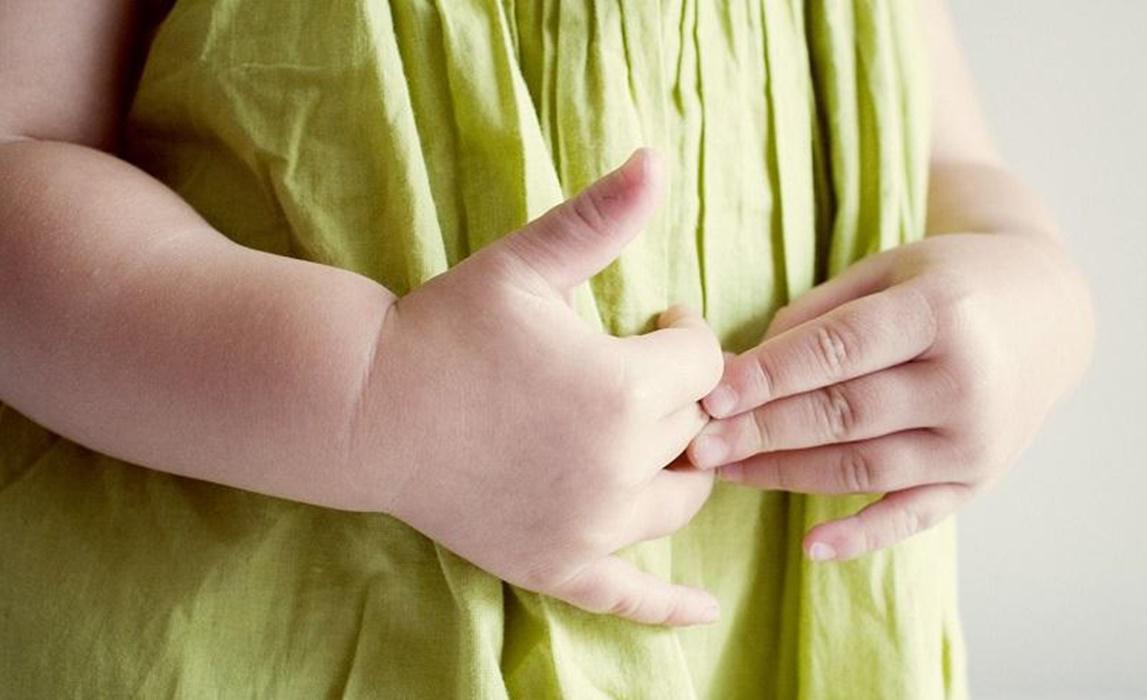Constipation — a Painful Problem

Constipation in toddlers can lead to an unhappy little one, so learn how to keep them regular and happy
Constipation is a common problem that almost every child will experience at some point in time. It is a condition where a child infrequently passes hard painful stools over a long period of time. Unfortunately, in many cases this problem goes unnoticed. Recently a mother brought her three-year-old child to the clinic. Her concern was her child’s loss of appetite. He would often start eating and then suddenly stop and refuse to continue. When I examined the child, I noticed hard masses in his belly. He hadn’t passed stools for three days, and the mother told me that when he did, they were usually hard and painful. Constipation can cause abdominal pain and loss of appetite in children. Normally when we eat, a bodily reaction called the gastrocolic reflex will cause the colon (large intestine) to constrict, creating the urge to defecate. If a child’s colon is filled with hard stools, this reflex will cause pain, and the child will stop eating. Eventually, he will refuse eating altogether to avoid this painful sensation. Constipation has a significant impact on a child, both physically and psychologically. A child who has passed painful stools will try to avoid going to the toilet again to prevent pain. That creates a vicious cycle that will cause the retention of more stool in the colon, stretching it to a point at which the colon doesn’t function properly and the constipation will get worse. A child that suffers from long-standing constipation may lose the ability to control his anal sphincter and may suffer from “leakage” of small amounts of loose stools and staining of his underpants.
This problem has a great emotional impact on a child. It causes the child to be afraid of the toilet. It will cause a child to feel embarrassed, to try to avoid certain social situations (avoiding public toilets at school, avoiding visiting friends) and to suffer from low self-esteem.
Constipation In Babies
Constipation is a common condition in toddlers and children, but it’s quite uncommon in little babies. Sometimes, normal phenomena might be mistaken for constipation:
• Breastfed and formula-fed babies can pass stools anywhere from six times a day to even once a week. Usually, when they do pass a stool, it is soft and not painful.
• A baby might seem to be struggling to pass stools, grunting and straining, even turning red, eventually passing soft stools. This is a result of uncoordination between the abdominal muscles pushing the stool out and the squeezing of the anal sphincter, which makes it difficult to defecate. Eventually, the baby learns to relax his sphincter and the straining situation is resolved.
Reasons
If a baby does suffer from true constipation, we need to search for a cause:
• Constipation may be the only sign of milk allergy in little babies. Sometimes there can be blood in the stool.
• Anatomic conditions such as bowel obstruction, Hirschsprung disease, or hernia.
• Hypothyroidism (Low thyroid hormone)
• Dehydration, Malnutrition
• Botulism (from exposure to honey)
• Rare metabolic disorders
Treatment
The treatment of constipation involves three aspects:
- Nutrition
• Avoid sugary sweet foods and drinks (including fruit juices); fatty foods; large amounts of white rice; and bananas. These may worsen constipation.
• It’s better to blend the whole fruit than to provide only the juice; your child will get more vitamins, minerals and fiber this way.
• Give your child foods rich in fibers (whole rice, cereals such as oats, whole fruits and vegetables, whole grain bread).
• Blended prunes (especially dried prunes) can sometimes help with constipation.
• Adding 1–2 spoons of olive oil to your child’s food may help.
• Make sure your child drinks plenty of water (not juice!). - Stool Softeners
If nutritional changes don’t help, the next step is to use stool softeners. There are different types on the market: I usually recommend Duphalac or Lactulose. This is a special type of sugar that is not absorbed, retaining water inside the gut and loosening the stool. I prefer not to prescribe suppositories (such as microlet or glycerine) as they are less effective, and sometimes may even be traumatic for the child. The goal is to get stools as soft as toothpaste—not firm, and not too loose. Start with a low dose (0.5–1 sachet) and gradually increase every 2–3 days until you reach the desired goal. Continue this dose daily for at least 3–4 months. The treatment usually lasts for several months for a couple of reasons:
• It takes time for the dilated rectum to get back to its normal size and function.
• It takes even longer for the child to forget the pain of passing hard stools.
• There is no risk of “addiction” or “getting used to” this treatment. - Behavioral Plan
• Encourage your child to sit on the toilet twice a day after breakfast and after dinner. This way you can take advantage of the gastrocolic reflex that occurs after eating. Let the child sit there for a few moments even if nothing happens, just to get him familiar with the situation.
• Remember, when your child is on the potty or the toilet seat, make sure his knees are higher than his hips. Squatting is even better. This position makes it easier to pass stools.
• Make it fun—in toddlers and preschool children, prepare a calendar. Every time your child successfully passes stools, put a little sticker there. Let him choose a little gift as a reward for every seventh sticker. This will motivate the child to “make an effort”!
Dr. Jonathan Halevy, Head of Pediatrics, Family Medical Practice Ho Chi Minh City
 We use cookies on this website to enhance your user experience
We use cookies on this website to enhance your user experience